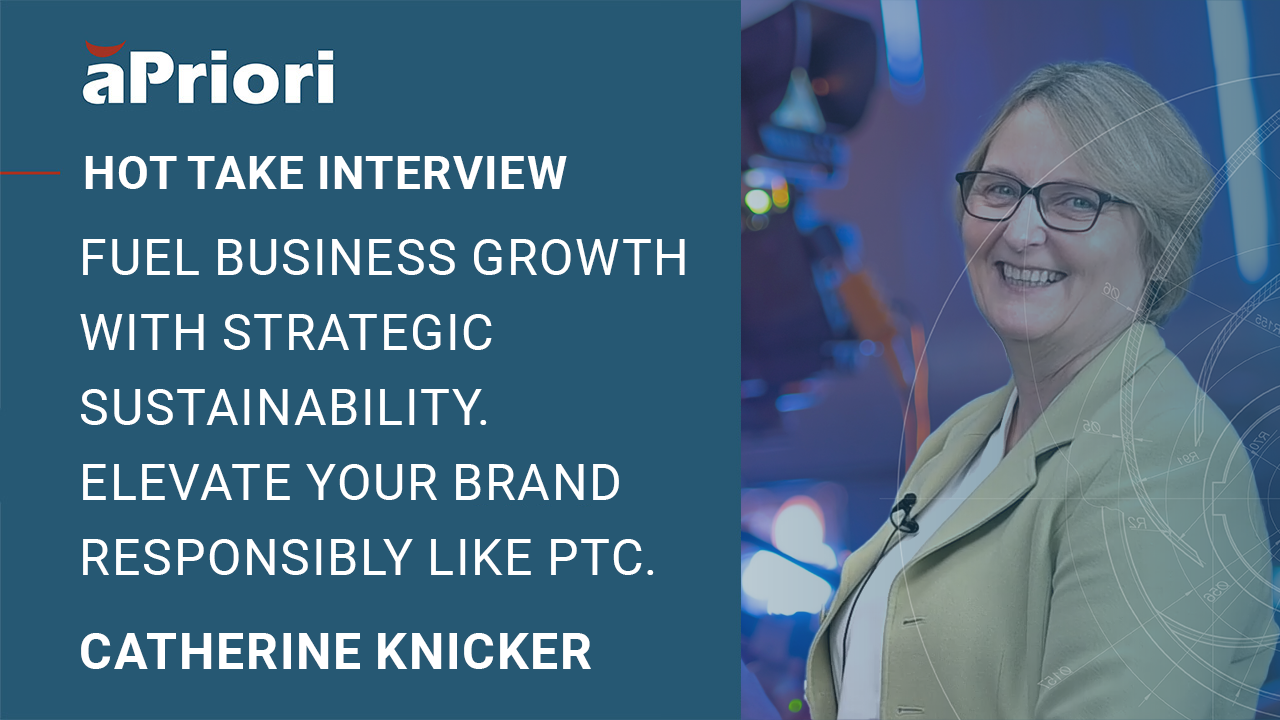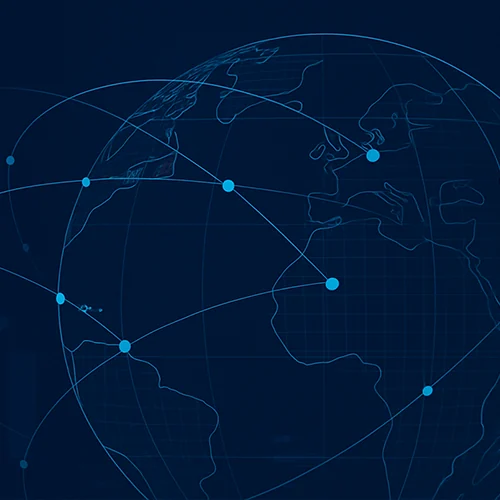Video
PTC: Fuel Business Growth with Strategic Sustainability and Marketing Synergy
Catherine Kniker, Chief Strategy & Marketing Officer at PTC, discusses the evolving role of sustainability in corporate strategy and marketing.
Catherine discusses the increasing importance of sustainability for businesses, citing that 87% of PTC’s customers have sustainability goals. She then elaborates on how PTC, a company assisting industrial and manufacturing firms, integrates sustainability into the entire product lifecycle—from design and manufacturing to service and end-of-life considerations—highlighting the multifaceted approach towards achieving environmental goals. The discussion underscores the broader perspective PTC takes beyond the conventional “end-to-end” approach, showcasing a comprehensive strategy that integrates sustainability throughout the product journey.

Transcript
Leah Archibald: You have, for a long time, been the Chief Strategy Officer at PTC.
Catherine Kniker: That’s right.
Leah Archibald: And you recently got a title change to include sustainability. Tell me about that.
Catherine Kniker: Both sustainability and marketing. So as part of my strategy remit, I’m responsible for our environmental sustainability strategy, both for PTC as a company, as well as our product and go to market strategy for our customers. So both parts of it.
Leah Archibald: So just that little part of your story tells me that sustainability is now becoming a key part of strategy for many companies.
Catherine Kniker: Absolutely. We’ve constantly talking to our customers and at last check, 87% of our customers have some form of sustainability goals. So it’s a top three criterion for our customers. If you think about our customers, they’re all manufacturers of physical goods and topics like dematerialization, energy consumption and waste reduction are huge for them. The manufacturing sector alone accounts for, I believe, 54% of global energy consumption. So big issue for our customers.
Leah Archibald: So take me under the hood. What does PTC offer…
Catherine Kniker: Sure.
Leah Archibald: Your customers to help them meet their ESG targets?
Catherine Kniker: Sure. So if you step back and say, what does PTC do, we help industrial companies and manufacturing companies design, engineer, manufacture and service physical products. And we help them digitally transform the way they do that. So if you think about the product lifecycle, there are environmental components that from way back up at design, if you design with sustainability in mind, and that’s where we have a probably an accelerated push with our partnership with aPriori and with others like ANSYS to really help the designer and the engineer understand what they’re trading off way back up a design phase. Because just like cost, it’s the decisions that are made in the design phase that impact the cost of the product, the carbon footprint of the product.
Catherine Kniker: So a bunch of effort there, but we actually think about it throughout the product lifecycle. So, if you go from design then into operations, like is there a more efficient way to produce the product so that you’re using a less energy? Do we have energy monitoring solutions that are built on our thing works products? So a bunch of partners have built on top of that. And then you go into the service, like, so now the product is manufactured and it’s out in the world.
Catherine Kniker: There’s a lot from a carbon footprint there. So managing your spare parts, like if you can produce less spare parts and if you can place those spare parts as efficiently, as close to where the incident is going to occur, then you’re reducing embodied carbon. You reduce the energy consumption to get from A to B. Deploying service techs like how the whole service process works. Like either a product comes into a depot or we deploy people. So we have a lot of offerings there in terms of how to do that as efficiently as possible.
Catherine Kniker: And then I’d say the last piece of the product lifecycle is the whole circular notion. So when a product reaches its end of life, we wanna figure out are there ways to remanufacture, are there ways to reuse? And in fact, recycling is almost the last priority. Again, that comes back to design. If you design in a modular way, you can disassemble in a modular way and then get as much reuse and remanufacture as possible and recycle.
Catherine Kniker: And then lastly, throw something into a landfill that should be the last resort. So we actually have, because the product is at the heart of our strategy, we’re thinking about it throughout the product lifecycle.
Leah Archibald: A lot of manufacturers talk about end to end.
Catherine Kniker: Yep.
Leah Archibald: But you’ve just talked about a lot more…
Catherine Kniker: Yep.
Leah Archibald: Than end to end. So we often hear manufacturers say, oh, it’s a end-to-end solution because it goes from design all the way to sourcing.
Catherine Kniker: Yep.
Leah Archibald: That’s really only two steps.
Catherine Kniker: That’s it.
Leah Archibald: Or it’s an end to end because, oh, it goes to… We are tracking it from design to customer delivery, but that doesn’t account for…
Catherine Kniker: That’s right.
Leah Archibald: The disposal of the product. So you are really taking a entire journey…
Catherine Kniker: That’s right.
Leah Archibald: On product and integrating it together.
Catherine Kniker: Yeah. I mean, the core of the company started with 3D design. So the actual… You hear a lot of people these days talk about the model based enterprise, well, that starts with a 3D model. It’s kind of shocking to know that a lot of folks that have used 3D up in the design phase, they used it more as a efficiency tool for designing. But were not using some of the rich content from that model down into manufacturing and into service.
Catherine Kniker: And so we are seeing a lot happen there. And that will also help with sustainability initiatives ’cause data will flow a lot smoother into the downstream processes. So yeah, so our whole company, we talk about, like many companies talk about a digital thread, we talk about model-based, closed loop digital thread throughout the product lifecycle. It’s a big strategy. And we’re filling out various components and working with partners like yourselves to really enhance what… So we can meet the customer where they are. We’ve always had an integration between Creo, our CAD tool and PLM, our Windchill, our tool with aPriori.
Catherine Kniker: One place where our customers can do a bill of material or a bomb roll up and capture all that carbon information. So aPriori is a great source of that. And we also have material information coming from maybe raw material information, coming from Granta and just putting all of that in the bill of material. So sustainability is the latest impetus to further the partnership. But I think the three things that aPriori does, cost design for manufacturability and sustainability, they all play into this trade off analysis that we want designers to do. And so therefore make better design decisions that leads to more sustainable designs.

